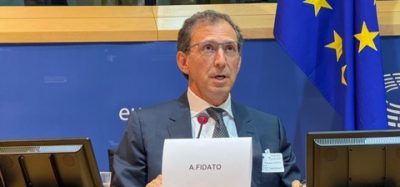Product Showcase: World class fire training
- Like
- Digg
- Del
- Tumblr
- VKontakte
- Buffer
- Love This
- Odnoklassniki
- Meneame
- Blogger
- Amazon
- Yahoo Mail
- Gmail
- AOL
- Newsvine
- HackerNews
- Evernote
- MySpace
- Mail.ru
- Viadeo
- Line
- Comments
- Yummly
- SMS
- Viber
- Telegram
- Subscribe
- Skype
- Facebook Messenger
- Kakao
- LiveJournal
- Yammer
- Edgar
- Fintel
- Mix
- Instapaper
- Copy Link
Posted: 22 January 2019 | Randall Rhodes | No comments yet
Dallas-Fort Worth International Airport’s Fire Training Research Centre has provided groundbreaking aircraft rescue firefighting and structural training services in an innovative learning environment for nearly 25 years. Assistant Fire Chief, Randall Rhodes, reveals how a combination of research-oriented, multi-lingual curriculum, immersive digital activities, and practical applications stand students in good stead.
In 1994, Dallas-Fort Worth International Airport opened the DFW Fire Training Centre (FTC) in partnership with the Federal Aviation Administration (FAA) as a Regional Training Centre for airport/ aircraft rescue firefighting (ARFF). Using experienced operational firefighters and firefighter supervisors who are state-certified fire instructors, the FTC developed training courses encompassing basic and advanced ARFF, tactically-focused training, and professional firefighter career development. These courses were developed using National Fire Protection Association guidelines, and FAA regulatory requirements.
In January 2013, the DFW FTC was re-opened following a $30 million upgrade as the DFW Airport Fire Training Research Centre (FTRC). The upgrades included the world’s only 360-degree A380 live fire mock-up, three-dimensional liquid hydrocarbon live fire trainer using EPA-approved and environmentally-friendly fuels, and a state-of-the-art innovative and an interactive high-tech classroom for student training. These mock-ups include narrow- and wide-bodied aircraft meeting the needs of Index A-E airports with interior and exterior live fire capabilities.
To date, the FTRC has trained over 37,000 students from 45 U.S. States and 52 international countries. The core curriculum is adaptable to meet various regulatory requirements of foreign countries. The FTRC has the ability to provide training on-campus, off-campus, and in different languages.
The new FTRC permits various ARFF-related research projects to be explored by fire departments, aviation manufacturers, ARFF industries, and universities. Current projects include research into fluorine-free firefighter foams.
The fuel spill burn area (FSBA) is a wide-bodied aircraft simulator that cannot be found anywhere else in the United States. The A380 mock-up provides engine and wheel-brake fire training. On the interior, students will face various challenges of multiple floors, fire places located in the cabin, cockpit, cargo holds, and lavatories.
The three-dimensional liquid hydrocarbon fuel pit is designed to use environmentally-friendly E-III fuels for firefighters to train on flowing, moving, dripping, or pressurised 3D-type fuel fires. Firefighters use various appliances and tactics to lay down appropriate foam blankets of dry chemical agents on liquid fuel fires to simulate fuel fires from aircraft fuel storage tanks, airport refuelling vehicles, and airport fuel storage farms.
Classroom training and instruction incorporates many technology advances and instructor experience to provide a high degree of instruction. One distinct tool is the high-tech classroom, whereby each student utilises a touch-screen computer to access portions of the training software. This DFW-created and -patented software creates near 3D renderings of various commercial and general aviation aircraft in the ‘Aircraft Familiarization’ tab, to encompass aircraft exterior components, aircraft interior design, and cockpit operations related to a firefighter response. In this tab, using the same near-3D programming, students can learn about signs, lighting and markings, but can also learn to understand layout – using a generic airport provides them with the situational awareness needed to operate on the airport operations area.
Under the ‘Strategies & Tactics Board’ tab, the software programming can use mapping software to locate airports around the world. The instructor can place various sizes of aircraft types on to the map, place parts of the aircraft on fire, adjust the wind speed and direction, add ARFF vehicles, and other visual cues the student may be presented with. Students will then present the action plan to the rest of the class in an open discussion in order to develop thought processes beneficial to the response.
By using some of the nation’s most advanced facilities, in conjunction with the innovative curriculum, the FTRC ensures that firefighters are prepared for any incident.
Issue
Related topics
Accidents and incidents, Aircraft rescue and firefighting (ARFF), Airport crisis management, Airside operations, Safety


















